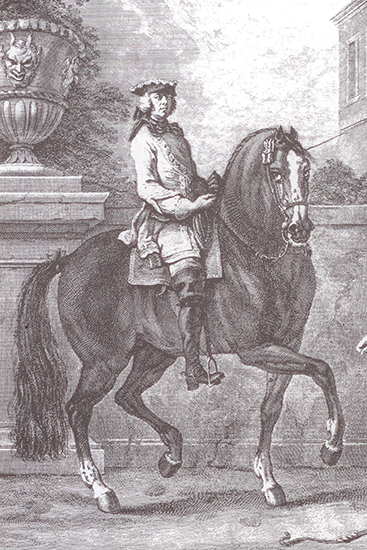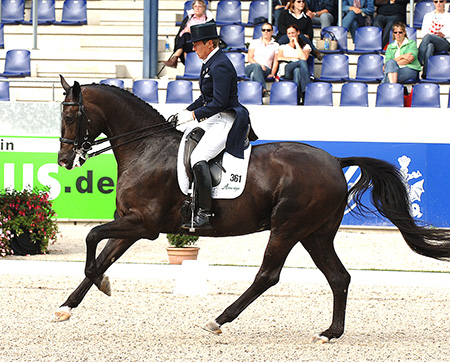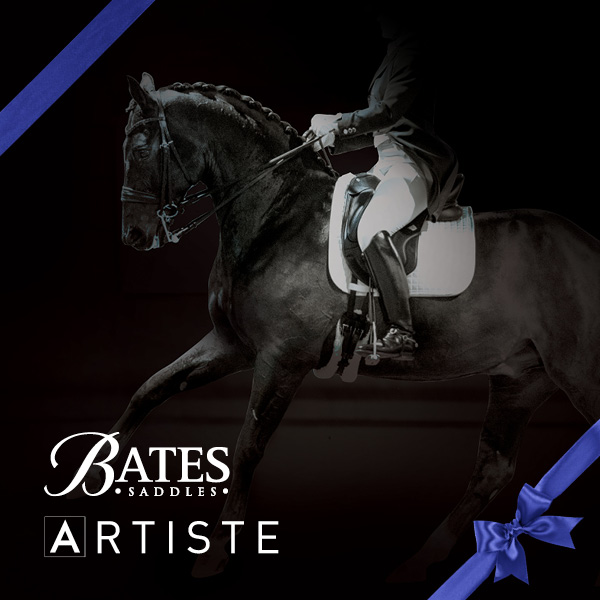Starting at the beginning, look at what the old masters told us…
“It is by degrees that a rider gains this firmness of seat, which must proceed from equilibrium, and not from the iron grip of the calves and heels, which should be left to rough-riding jockeys. The rider needs a deep seat, and erect posture, without rigidity or ungainliness, and needs to become relaxed and poised without laxity or nonchalance.”
Gustav Steinbrecht refuses to even begin talking about the training of the horse before he addresses the rider’s seat. He advises: “A back that is braced too much curves the spine forward, just as a back that is too relaxed curves it towards the rear and has the same disadvantages, only in the opposite direction.”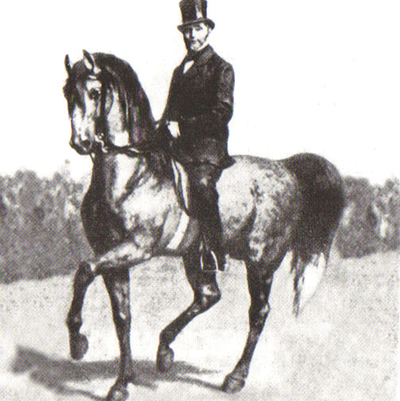
“A back that is braced too much curves the spine forward, just as a back that is too relaxed curves it towards the rear and has the same disadvantages, only in the opposite direction…”
Given, he suggests that, “…the rider’s seat is dependent mainly on the carriage of the horse, and is correct only if the rider unequivocally accommodates himself to this carriage.” He advocates starting all riders on a trained horse between the pillars to get the feel of the animal and have the horse’s movement direct the rider to the perfectly balanced seat.
In more modern times, US rider and coach Robert Dover gets a bit more interesting with his explanations.
“If you imagine you are sitting on a horse’s back. Are you sitting in an active, driving seat or are we passive? How do we make our passive seat into a driving aid? We need to learn that before we start training an animal.”
Robert proposes using the breath to achieve an active or braced seat. Inhale to brace and exhale to drive. We will expand on this concept later in the series.
He continues his explanation, “With (the) braced seat, imagine you are very little and that you are on a swing set with your best friend when you were about four years old and you race each other to see which of you can get the highest faster. Remember that? And your feet couldn’t touch the ground. Each time you’d go back, without knowing it you took a deep breath, and you would push the swing with your back and your seat to try and get more momentum to go up higher. That would be the same way you would use your driving seat.”
Kyra Kyrklund approaches it from a slightly different angle, “You hear very often you have to get strong with your back to use your leg. I think you have to be strong with your tummy to use leg, rather than strong in the back. You have to be able to use your muscles without getting tense. You have to be able to feel what is happening under you. Good riders don’t push down into the saddle, they balance themselves on their seat bones, and point with the seat bone rather than pushing with the seat bone.”
Kyra and Max at Aachen “Are you sitting in an active, driving seat or are we passive? How do we make our passive seat into a driving aid? We need to learn that before we start training an animal…”
So, we need postural strength without being stiff. We need to stay with the movement of the horse as well as be able to affect the horse’s centre of gravity. If the rider is too relaxed, it is too hard to remain with the movement of the horse. You end up out of sync and usually behind the movement as your body reacts too slowly and jarring into your horse’s back as his back moves in the opposite direction as yours.
This is why there is always a focus on the core.
Podhajsky: “contrasts combine to make harmony… The rider should sit upright, but not stiff, and he should be completely relaxed without slouching. This harmony can only be the result of a long and systematic training of the human body of which ballet dancers give an excellent example.”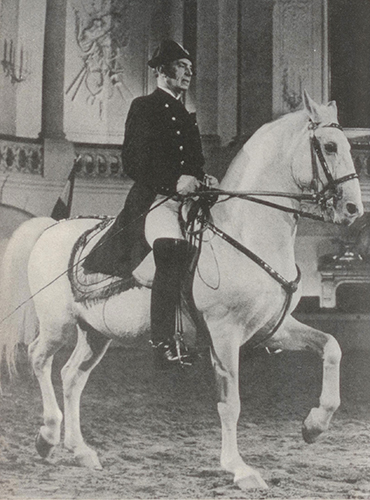
“The rider should sit upright but not stiff, and he should be completely relaxed without slouching. This harmony can only be the result of a long and systematic training of the human body of which ballet dancers give an excellent example…”
The first exercises will help you improve postural strength and the next exercises help to achieve a supple back and seat before we look at the legs, shoulders, hands and breathing.
Now let’s put the theory into practice: STRETCHING
In riding it is important to be able to co-ordinate our body perfectly as a whole system. To achieve this, some muscles need to lengthen while some need to shorten and connect more.
It is best to start this process from a neutral position. Unfortunately, lifestyle means that we often spend a lot of our time in a flexed position; hunched over a desk or over a broom sweeping the stable aisle way! Muscles and fascia can get locked and shortened by overuse, or injury, making a neutral position difficult to obtain so it’s important, before we get too concerned with engaging too much of the body, that we lengthen the over-tight parts first.
Sometimes stretching can be limited if a muscle contains trigger points. Knots in muscles render them less effective as the fibres in this area are already restricted and it is then harder to train the muscle to work to its full potential. Trigger points can restrict the range of movement of a muscle or even trap nerves. Also, if a muscle isn’t functioning efficiently, other muscles may be recruited to compensate. It is often necessary to release trigger points before you can get a good result from stretching.
This is where rolling on a foam roller or using a firm ball can be helpful. Some common trigger points and release techniques are as follows:
rolling out glutes
rolling out calves
rolling out hip flexors
rolling out the back with ball against the wall
Always take care to avoid rolling on joints.
This is also good to do after you ride to help muscles return to a neutral state, especially if you ride a number of horses, or if you have known injuries which means your body alignment is less than perfect.
Once we have eliminated these knots and are able to stretch more effectively, be careful not to overstretch.
Stretching is best done little and often. You are better to do a little bit everyday to notice lengthening in your muscles over time rather than doing it in a big way, “binge stretching” once or twice a week which can lead to strains and injury to tendons and ligaments.
Here are a few stretches that will help with common-over tight muscles: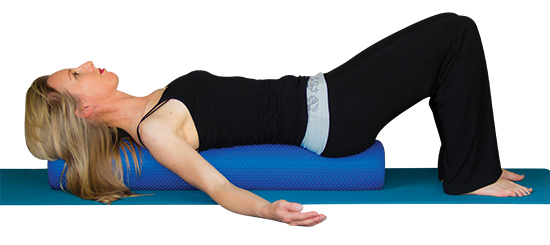
PEC STRETCH:
This is to stretch the front of the chest to counter any hunching. Make sure you stabilize the shoulder joint so you can really target the correct muscle and not just stretch your arm backwards. You can do this on the roller. Make sure you don’t just flop your chest open. Keep the back of your ribs well connected to the roller.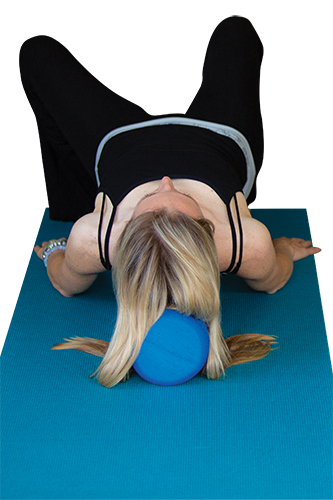
KNEE OPENINGS ON ROLLER:
This will help neutralise the pelvis and allow the sacroiliac joints, the two joints at the back of the pelvis, either side of the spine, to settle and unlock. Make sure your core is switched on, and you start with knees and feet hip joint width apart. Watch that when you drop one knee out, the other remains aligned and doesn’t drop out slightly to counter balance.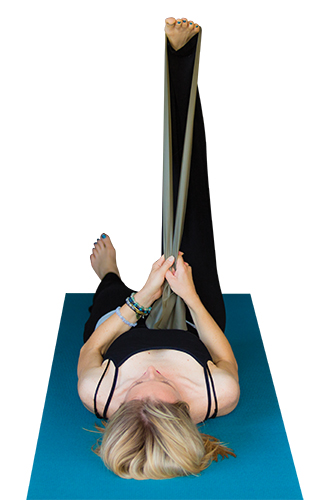
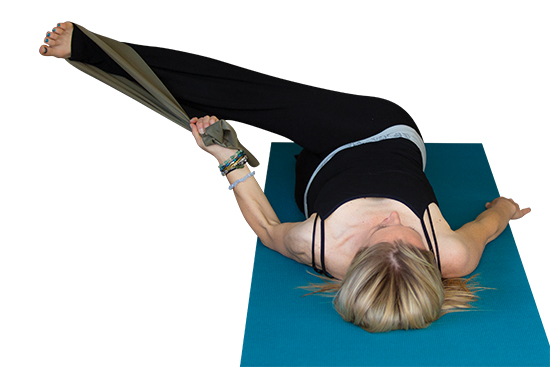
HIP MOBILISERS:
Unlocking your hips helps create a seat that can stay and swing with the horse’s back. Stretching the inner thighs, hamstrings (backs of the thighs) and glutes with a theraband can help warm up the hip joints and get some movement to prepare them for riding, especially in the older athlete or if you’re used to being stuck in a static position for long periods of the day. When you do this exercise, make sure you keep a neutral spine, with the tailbone well anchored to the ground, supported by your core and with relaxed feet, so you don’t just stretch your spine or the sciatic nerve (the big nerve that runs from your lower back down the back of your thigh).
It may make the range of movements of your hips smaller, but you will be targeting the correct muscles and not recruiting or straining the wrong muscles or nerves. Keep it flowing and don’t overdo it!
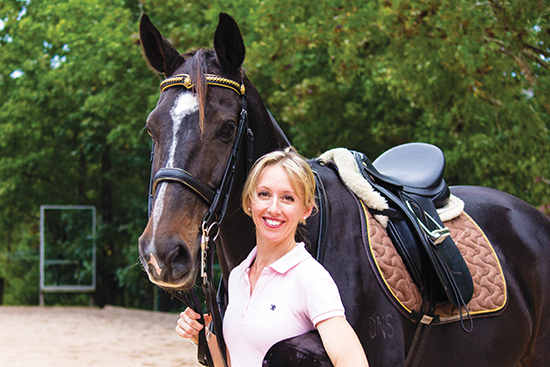
This article first appeared in the April 2016 issue of THM.
Want more – go to Rebecca’s Who’s Who entry to find a list of articles by her…

